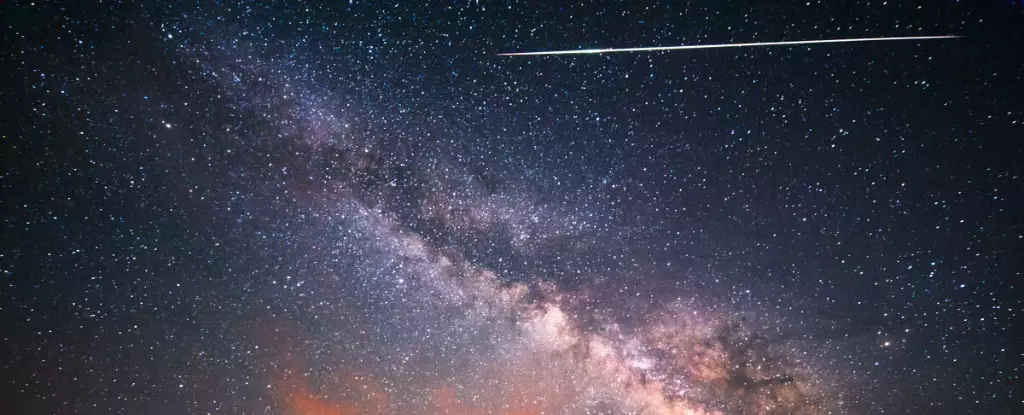Eta Aquariids, also known as shooting stars, are a common occurrence in the night sky throughout the year. However, certain nights offer a more magnificent display of these meteors. As the Earth moves along its orbit around the Sun, it passes through streams of dust and debris left behind by comets and asteroids. These debris streams give rise to meteor showers, which are characterized by a significant increase in the number of shooting stars visible in the night sky.
The Influence of Halley’s Comet
One of the most notable meteor showers associated with Earth’s orbit is the Eta Aquariid meteor shower, which originates from the debris stream left behind by the famous Halley’s comet. Halley’s comet, officially known as 1P/Halley, circles the Sun every 76 years, leaving a trail of dust and gas in its wake during each pass through the inner Solar System. Over thousands of years, this debris has spread out along the comet’s orbit, creating a broad swathe of dust and debris that intersects Earth’s path twice a year.
The Eta Aquariids are particularly well-known for being one of the best meteor showers of the year, although they are relatively obscure due to their optimal visibility from the southern hemisphere. Observers in southern locations, such as Australia, have the advantage of being able to witness this spectacular event during the early hours of the morning. The radiant point of the Eta Aquariids, located in the constellation Aquarius, rises in the southern sky around 1:30am to 2am local time, providing ample opportunity for observation before the break of dawn.
The Eta Aquariid meteor shower promises an unparalleled viewing experience this year, thanks to a fortuitous alignment of factors. The peak of the meteor shower coincides with a new Moon, ensuring exceptionally dark skies in the predawn hours for optimal visibility. Moreover, there are indications that this year’s Eta Aquariids may be more active than usual, potentially offering a heightened rate of meteors streaking across the sky.
Planning for Observation
For astronomy enthusiasts and stargazers looking to witness the Eta Aquariid meteor shower at its best, planning is essential. The ideal time to observe the peak of the meteor shower falls on the morning of May 6th, with the weekend of May 4th and 5th also offering favorable viewing conditions. Patience is key when observing meteor showers, as the meteors do not appear at a consistent rate. It is advisable to settle in a dark and comfortable spot, facing the eastern sky, and allow time for your eyes to adjust to the spectacle.
The 2024 Eta Aquariid meteor shower holds the promise of being a truly exceptional event, with some scientists predicting it to be the strongest of the entire 21st century. While meteor shower activity is notoriously difficult to predict, the dark skies and potential for enhanced rates this year make it an opportune moment for astronomy enthusiasts to witness nature’s celestial fireworks. Whether it proves to be an extraordinary display or a more typical event, the Eta Aquariids never fail to captivate observers with their beauty and wonder.



Leave a Reply